West Covina, CA Pollen and Allergy Report for Summer 2023
Pollen Allergy Trends in West Covina, CA
When is pollen lowest in West Covina, CA?

February
Lowest month total PPM
Avg. PPM
When is pollen highest in West Covina, CA?

January
Highest month total PPM
Avg. PPM
How does pollen in West Covina, CA compare to California?
West Covina has a lower average PPM than the state of California.
West Covina yearly avg PPM:
California yearly avg PPM:
How does pollen in West Covina, CA compare to the USA?
West Covina has a lower average PPM than the USA.
West Covina yearly avg PPM:
USA yearly avg PPM:
Is pollen worse this year in West Covina, CA?
Spring 2023 was about the same as 2022.
Spring 2023 PPM:
Spring 2022 PPM:
Average PPM in West Covina, CA
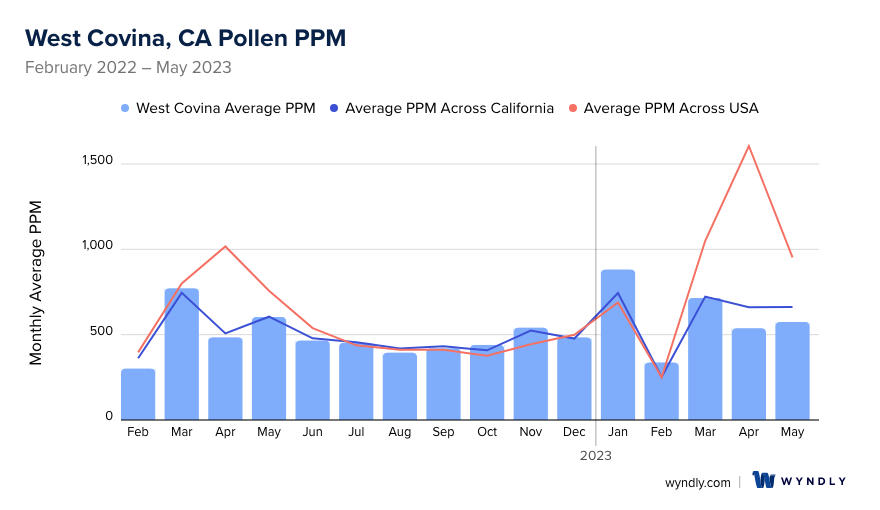
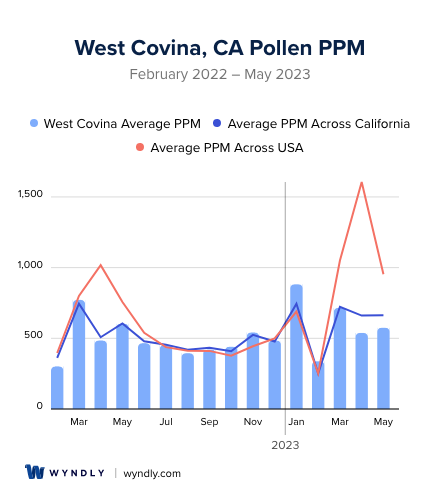
West Covina, CA Pollen and Allergy Breakdown by Month
Grass
When is grass pollen highest in West Covina, CA?
May has the highest grass pollen in West Covina, CA with an average PPM of
When is grass pollen lowest in West Covina, CA?
December has the lowest grass pollen in West Covina, CA with an average PPM of
Tree
When is tree pollen highest in West Covina, CA?
March has the highest tree pollen in West Covina, CA with an average PPM of
When is tree pollen lowest in West Covina, CA?
August has the lowest tree pollen in West Covina, CA with an average PPM of
Weed
When is weed pollen highest in West Covina, CA?
November has the highest weed pollen in West Covina, CA with an average PPM of
When is weed pollen lowest in West Covina, CA?
February has the lowest weed pollen in West Covina, CA with an average PPM of
West Covina, CA Pollen Monthly Breakdown by Pollen Type
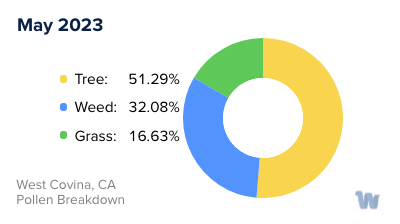
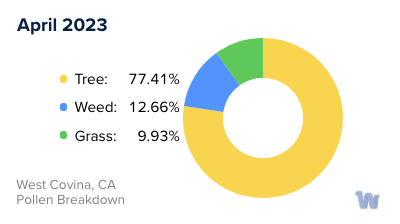
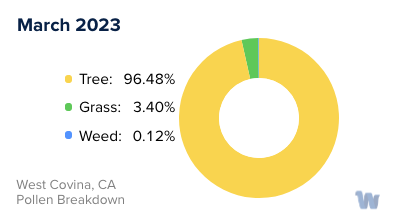
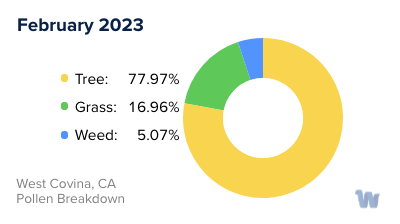
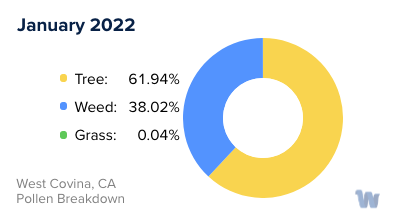
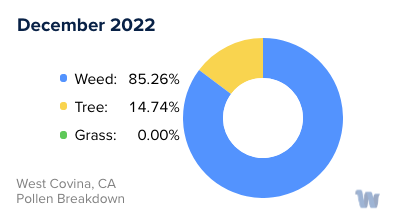
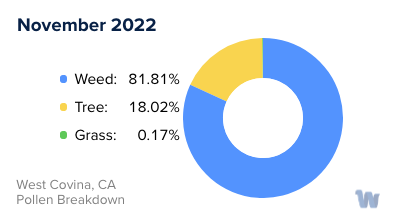
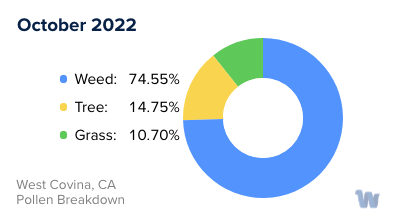
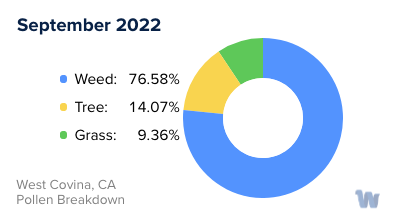
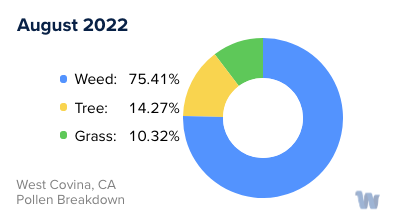
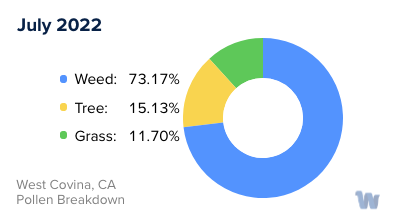
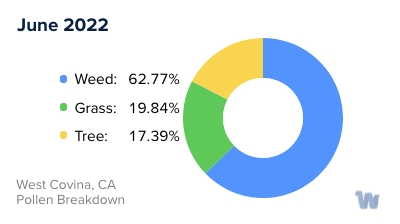
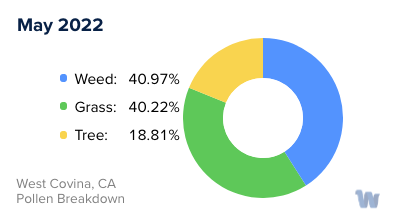
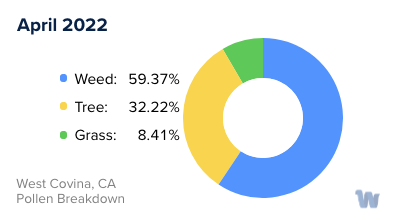
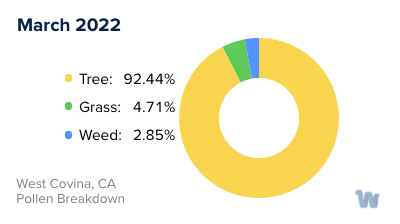
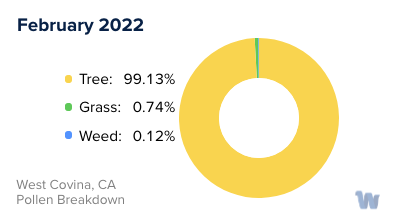
Pollen and Hay Fever in West Covina, CA
In the picturesque city of West Covina, California, the blooming flowers and lush greenery are not just a treat for the eyes, but sometimes a challenge for the sinuses. The region is a hotspot for pollen allergies, commonly referred to as hay fever.
One of the culprits behind the itchy eyes and sneezes is tree pollen. In West Covina, trees such as oaks, pines, and olive trees begin to release pollen as early as late winter and continue through the spring. This is the time when residents may notice a fine dusting of yellow on their cars and sidewalks, which is actually pollen!,As spring turns into summer, grass pollen takes center stage. Bermuda, Kentucky bluegrass, and ryegrasses are common in Southern California, and they release pollen that can cause allergic reactions. If you’re an outdoor enthusiast, be mindful of grassy areas during the early summer months.
Towards the end of summer and beginning of fall, the main source of pollen shifts to weeds. In West Covina, ragweed is a common weed that releases copious amounts of pollen into the air. Other weeds such as sagebrush and tumbleweed also contribute to the pollen count.
The varying climate in West Covina means that different types of pollen are in the air at different times of the year. The mild winters allow for early tree pollen, while the warm summers support grass growth. The transition into fall brings weed pollen to the forefront.
Being aware of the pollen seasons in West Covina is the first step in understanding what triggers your allergies. While the natural beauty of the city is undeniable, the pollen from trees, grasses, and weeds might cause some residents to keep their tissues handy.

